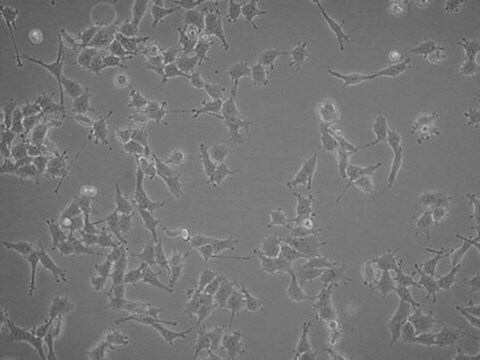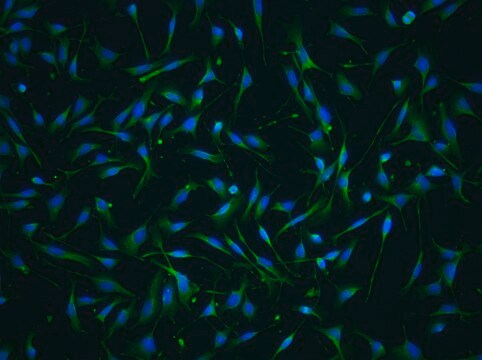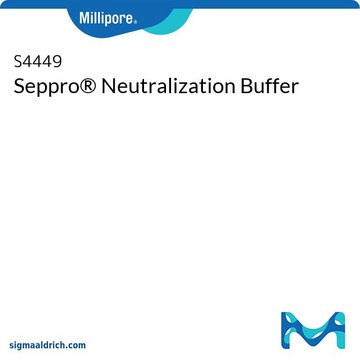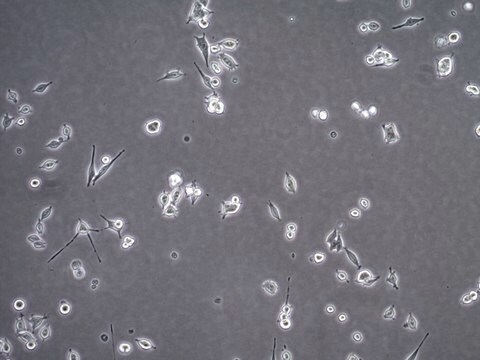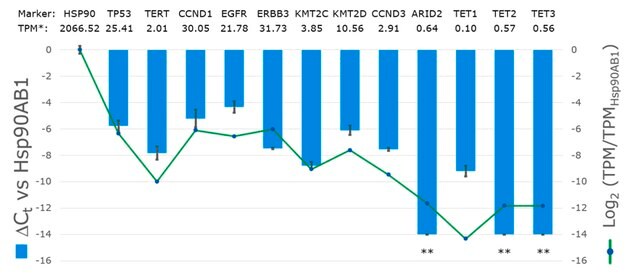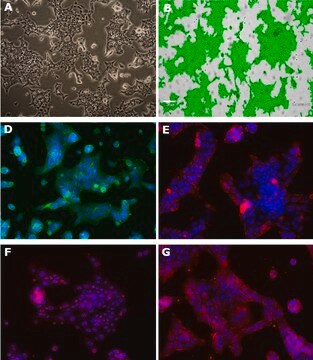SCC226
YUMM1.4 Mouse Melanoma Cell Line

Sinônimo(s):
YUMM1.4 Mouse Melanoma Cell Line, Yale University Mouse Melanoma 1.4 cell line, Yale University Mouse Melanoma cell line
About This Item
Produtos recomendados
fonte biológica
mouse
Nível de qualidade
embalagem
vial of ≥1 x 10^6 vial (viable cells per vial)
fabricante/nome comercial
Millipore
técnica(s)
cell culture | mammalian: suitable
Condições de expedição
liquid nitrogen
temperatura de armazenamento
−196°C
Aplicação
- Each vial contains > 1X106 viable cells.
- YUMM1.4 cells are tested negative for infectious diseases by a Mouse Essential CLEAR panel by Charles River Animal Diagnostic Services.
- Cells are verified to be of mouse origin and negative for inter-species contamination from rat, chinese hamster, Golden Syrian hamster, human and non-human primate (NHP) as assessed by a Contamination CLEAR panel by Charles River Animal Diagnostic Services.
- Cells are negative for mycoplasma contamination.
Características e benefícios
Descrição-alvo
The YUMM1.4 cell line was produced to be more experimentally relevant. The cell line was derived by backcrossing important alleles into C57BL/6J mice. The mice were interbred to produce human-relevant genetically defined mouse models that could then be used to generate cell lines. Melanomas were induced by applying 4-hydroxytamoxifen to induce Cre-lox allele recombination. Cells were then mechanically and enzymatically dissociated from the removed tumor. The melanoma lines generated from this procedure retained important human melanoma characteristics useful for studying disease progression.
The YUMM1.4 cell line is driven by Braf activation, Pten inactivation, and Cdkn2a inactivation.1 The cell line is positive for the common melanoma marker, MelanA. The cells are syngeneic with C57BL/6J mice and are very tumorigenic in vivo.
Source
Cell line was derived from a 4-hydroxytamoxifen-induced melanoma tumor in a male C57BL/6 mouse into which mutations from the Braf/Pten genetically-engineered mouse model had been introduced via backcrossing.
References
1. Meeth, K., Wang, J. X., Micevic, G., Damsky, W., & Bosenberg, M. W. (2016). The YUMM lines: a series of congenic mouse melanoma cell lines with defined genetic alterations.Pigment cell & melanoma research,29(5), 590-597.
Armazenamento e estabilidade
Outras notas
Exoneração de responsabilidade
Código de classe de armazenamento
10 - Combustible liquids
Classe de risco de água (WGK)
WGK 2
Ponto de fulgor (°F)
Not applicable
Ponto de fulgor (°C)
Not applicable
Certificados de análise (COA)
Busque Certificados de análise (COA) digitando o Número do Lote do produto. Os números de lote e remessa podem ser encontrados no rótulo de um produto após a palavra “Lot” ou “Batch”.
Já possui este produto?
Encontre a documentação dos produtos que você adquiriu recentemente na biblioteca de documentos.
Nossa equipe de cientistas tem experiência em todas as áreas de pesquisa, incluindo Life Sciences, ciência de materiais, síntese química, cromatografia, química analítica e muitas outras.
Entre em contato com a assistência técnica